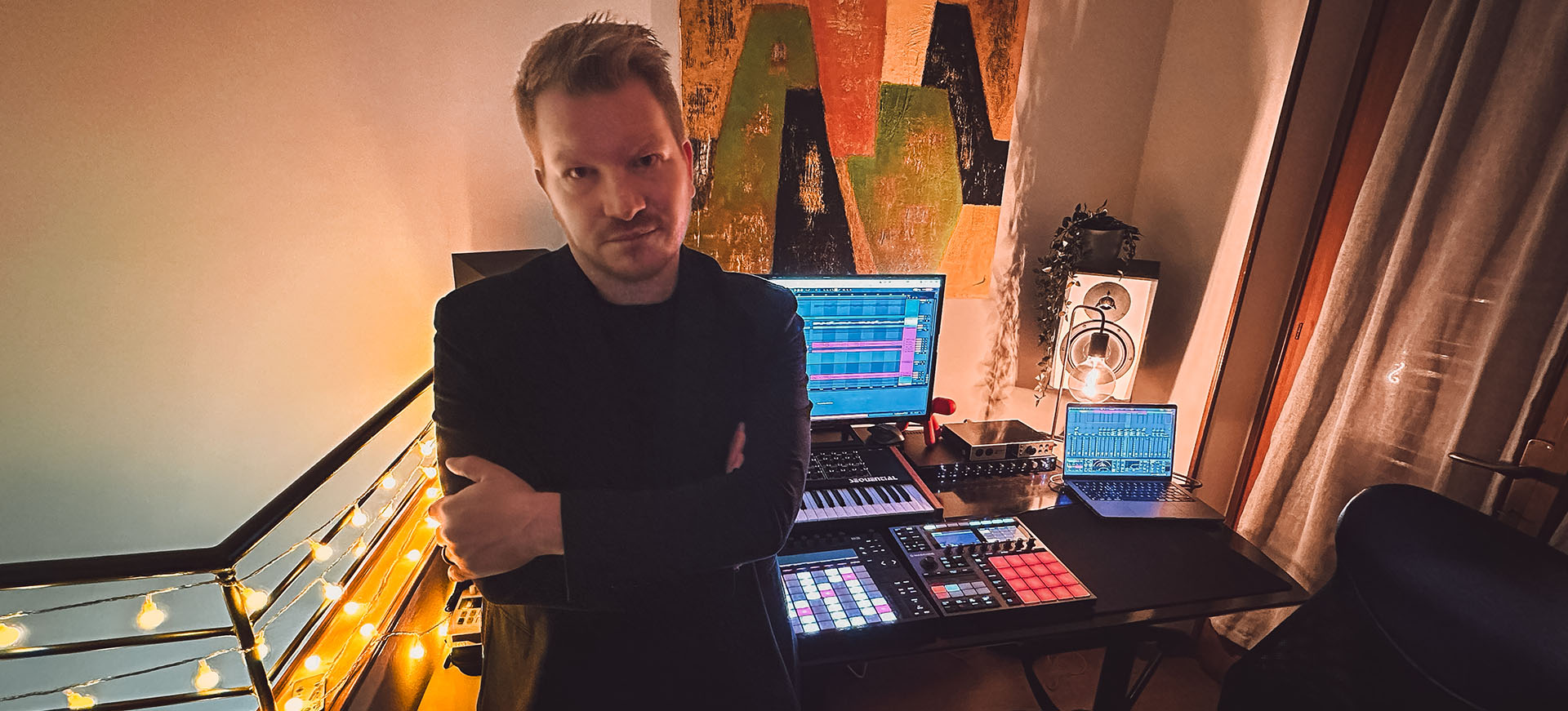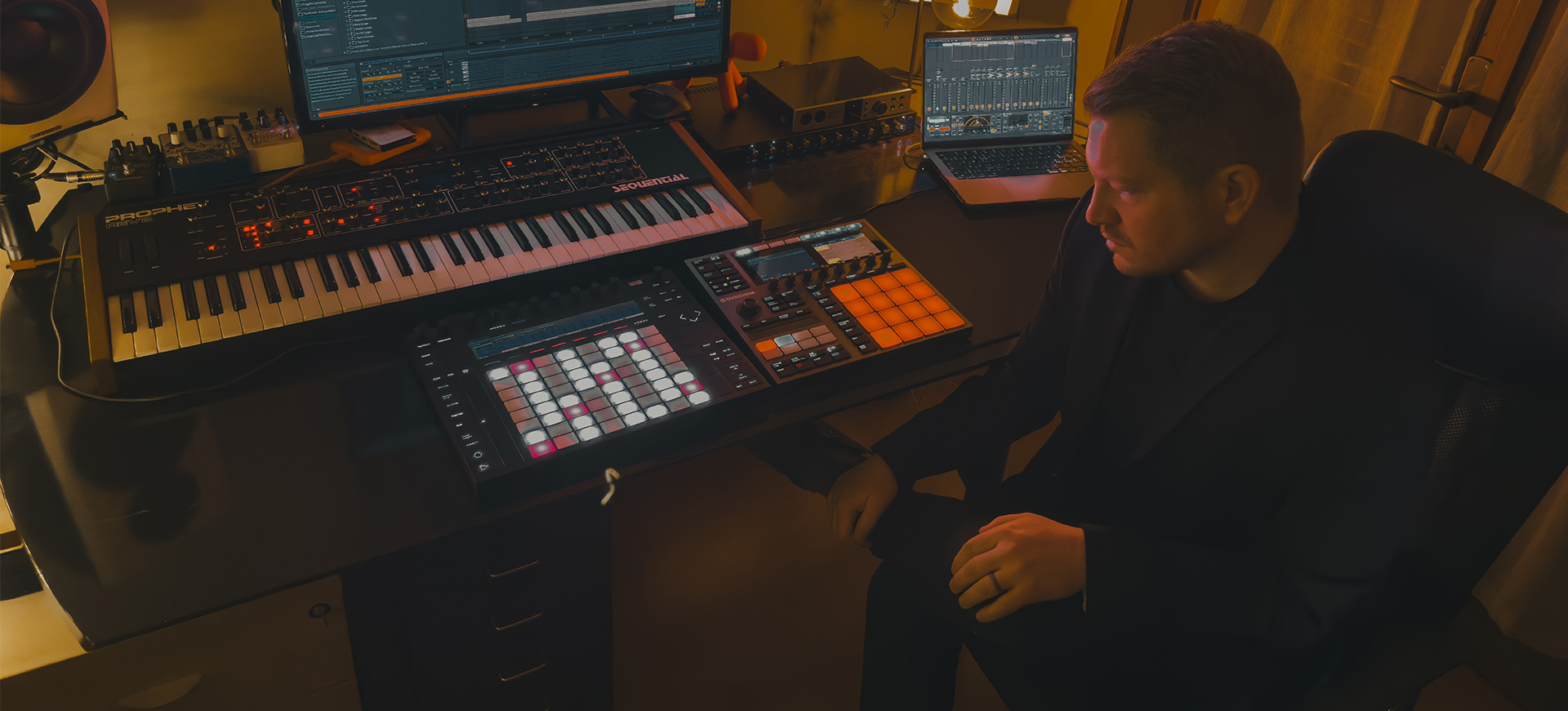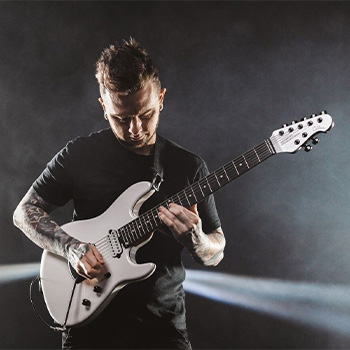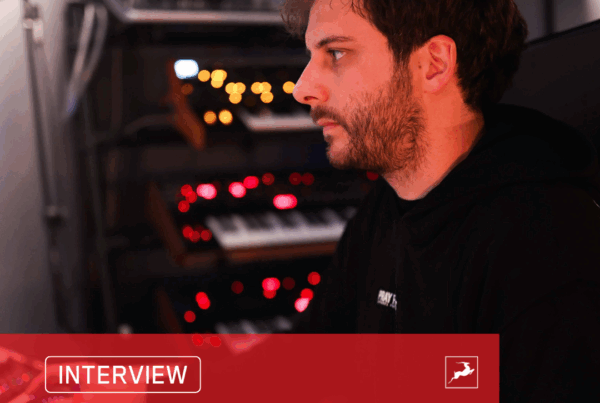Superior home and studio recording with top-notch sound via AD/DA converters and preamps by Discrete 4 Pro Synergy Core

Matthew S , also known as Matteo Scapin , is an Italian producer, music artist , and electronic music composer. Since 2009 , his diverse production style draws inspiration mainly from electronic and ambient music, with hints of tech house. Matteo is also a teacher of Ableton Live courses in the Veneto region. He collaborates as a sound designer with Gruppo L’Espresso and Gruppo Magnolia, both leaders in creating diverse television entertainment formats in Italy. In 2015, MTV recognized him as the Best New Generation Electronic Artist during the MTV Digital Days. He is here today to talk about his experience with our Discrete 4 Pro audio interface. We have prepared some questions about his experience
What are the features of the Discrete 4 Pro that you find most advantageous for music production?
After trying it out, the Antelope Audio Discrete 4 Pro is like that versatile musician who can play all the instruments in the orchestra. In my opinion, the features that make it a true gem for music production are its state-of-the-art A-D/D-A converters, serving as its primary voice. With a headroom of up to 130 dB on the monitoring DAC, the Discrete 4 Pro provides crystal-clear recordings faithful to the original. It’s like having a perfectly tuned stage for every note. As for the Virtual Patch Bay, imagine being a conductor with a magic wand. The virtual patch bay allows you to connect any audio source to any output. Want to hear the violin in the singer’s headphones? Done! This is fantastic! The effects of the Discrete 4 Pro are like a bag of tricks for the sound wizard. You can add reverbs, delays, compressors, and other effects directly to your inputs. Create different versions of the same recording with unique effect chains and print them all together. This is very important for my productions. Another aspect that I consider highly advantageous within the Discrete 4 Pro is the Four virtual mixers of 32 channels each! It’s like having four recording studios in one. Balance the tracks, make them dance together, and create a lovely mix. In summary, the Discrete 4 Pro is a reliable and powerful companion for anyone dedicated to music production.
How do you manage routing and track monitoring with the Discrete 4 Pro during recording sessions?
Managing routing and track monitoring with the Antelope Audio Discrete 4 Pro is crucial for achieving high-quality results during recording sessions. To address this, I utilize the virtual patch bay of the Discrete 4 Pro. This tool allows me to connect any audio source (microphones, instruments, synthesizers) to any output (monitors, headphones, external effects). I can create custom paths intuitively, without navigating through a maze of physical cables. Afterward, I create routing presets for common situations. For instance, I may have a preset for recording drums, another for an acoustic guitar, and so forth. This streamlines the setup process and ensures consistency across sessions. During recording, I use direct monitoring to minimize latency. This way, I can listen to the performance without any annoying delays.
How do you evaluate the sound quality of the Discrete 4 Pro compared to your expectations and the needs of your project?
The Discrete 4 Pro is like a Stradivarius violin in the world of audio interfaces. Every sonic detail is crucial, and the Discrete 4 Pro absolutely delivers. The quality of converters is the beating heart of every recording. The Discrete 4 Pro has reached new heights with its generation of converters, offering a headroom of up to 130 dB on the monitoring DAC. This means that every note, every nuance, is captured with surgical precision. The Discrete 4 Pro is like an impeccable translator. It faithfully reproduces what enters, without distortions or alterations. For a musician or producer like me, this is essential. In addition to these features, the Discrete 4 Pro adapts to every musical style. Whether you’re recording a string quartet or a metal group, its frequency response is like a chameleon that adapts to the environment. It’s like having a set of brushes to paint sounds. This is fundamental.
Another crucial feature of the Discrete 4 Pro is offering direct monitoring with minimal latency, allowing me to focus on performance without distractions. It’s like having a microscope to examine every sonic detail.
Can you describe your creative process?
My creative process as a producer is a continuous journey of exploration. I always start with an idea or concept in mind, which can be inspired by anything: a sound, a rhythm, an emotion, an image. From there, I begin to experiment with different sounds and textures, trying to capture the essence of that initial idea. I use Ableton Live as my main digital audio workstation (DAW), which offers me a wide range of tools and possibilities to shape my sound. During this process, I am not afraid to make mistakes or try new things. Often, it is these moments of experimentation that lead to the most interesting discoveries. Sampling environmental sounds is a fundamental part of my creative process. I often find myself recording sounds from the real world, such as the noise of the wind in the trees, the chirping of birds, or the sound of a city waking up. These sounds are then brought into my studio, where I manipulate and transform them using Ableton Live. For example, I might take the sound of a water drop and slow it down, creating a sonic texture that resembles a heartbeat. Or I might take the sound of the wind and filter it through a synthesizer, creating an ethereal melody that seems to come from another world. Once I have created these sonic textures, I use them as the basis for my tracks. I can add layers of synthesizers, drums, and other musical elements, creating a rich and engaging soundscape. This process of sampling and manipulating sounds allows me to create music that is unique and personal, reflecting my experiences and emotions. Sampling environmental sounds is much more than just a production technique for me. It is a way to explore the world around me, to capture moments of beauty and transform them into music. It is a journey of discovery, experimentation, and creative expression. And I hope that this is reflected in the music that I create.
Could you describe your music production setup? Which hardware and software instruments do you use most frequently in your projects?
My setup is a balance between hardware and software. Among my tools, I use Ableton Push 2, which allows me to have immediate and intuitive control over my DAW, Ableton Live. I use it in every production for its versatility and its ability to make the production process more fluid and creative. Another key element of my setup is the Prophet Rev2, a polyphonic synthesizer that offers a wide range of sounds and creative possibilities. With its two oscillators per voice, waveform modulation, low-pass and high-pass filters, and modulation matrix, the Prophet Rev2 is an incredibly expressive instrument that I use to create rich and detailed sonic textures. As for external effects, I use a variety of pedals and effects processors to further shape the sound of my instruments. These can include reverbs, delays, distortions, and much more. These effects allow me to add depth and character to my sounds, and to create unique soundscapes. Finally, my new arrival is the Maschine Plus. This is a standalone production workstation that combines a powerful sequencer, a sampler, and a vast library of sounds and effects. The Maschine Plus offers me a fast and intuitive workflow, allowing me to create beats, melodies, and complete arrangements with ease. All of this is managed through my Discrete 4 Pro audio interface, which serves as the central hub for my entire setup. This configuration allows me to have the best of both worlds: the warmth and physical presence of hardware instruments, combined with the flexibility and power of software.
Can you share with us an anecdote or a particular moment in your career that struck you or influenced you significantly?
One of the most significant moments in my career was when I received recognition as the Best New Generation Electronic Artist from MTV in 2015. This was a turning point for me, as it confirmed that I was heading in the right direction with my music. I still remember the day I received the news. I was in my studio, working on a new track, when I received the call. I couldn’t believe what I was hearing. I was incredibly excited and grateful for the recognition. From that moment, I realized that my passion for music could truly become something more. It motivated me to continue experimenting, pushing my limits, and striving to improve in every aspect of my music production. This recognition not only had a significant impact on my career, but it also influenced my approach to music. It taught me the importance of staying true to myself and my artistic vision, despite the challenges and difficulties that may come along the way. And it reminded me that, at the end of the day, the most important thing is to create music that I love and that resonates with others. And that’s exactly what I continue to do.
How did you discover the Discrete 4 Pro and what led you to choose it for your music production setup?
I discovered the Discrete 4 Pro through my research and recommendations from colleagues in the field of music production. I was looking for an audio interface that could offer exceptional sound quality, advanced routing flexibility, and solid construction. The Discrete 4 Pro from Antelope Audio met all these needs. What led me to choose the Discrete 4 Pro for my music production setup was its combination of high-quality A-D/D-A converters, its ability to handle a wide dynamic range, and its routing flexibility thanks to the Virtual Patch Bay. These features allowed me to obtain clear and detailed recordings, and to have complete control over my production workflow. The Discrete 4 Pro proved to be a significant upgrade for my music production setup, offering me the tools and flexibility I needed to take my music to the next level. I am very happy with my choice and I look forward to seeing where it will take me in the future.
What is your favorite feature of the Discrete 4 Pro and why? How have you used it in your projects?
My favorite feature of the Discrete 4 Pro is undoubtedly the Virtual Patch Bay. This feature allows me to connect any audio source to any output in an intuitive and flexible way. It’s like having an entire recording studio at my fingertips, with the ability to configure the audio signal routing exactly as I wish. The Virtual Patch Bay has allowed me to experiment with new configurations and optimize my production workflow. For example, I can easily send the signal from a synthesizer to a reverb effect, and then send the output of that reverb directly to my headphones for real-time monitoring. This gives me immediate control over the sound and allows me to perform sonic experiments in real time. In addition, the Virtual Patch Bay has allowed me to create routing presets for common situations, such as recording drums or acoustic guitars. This has simplified the setup process and allowed me to spend more time creating music and less time managing signal routing.





